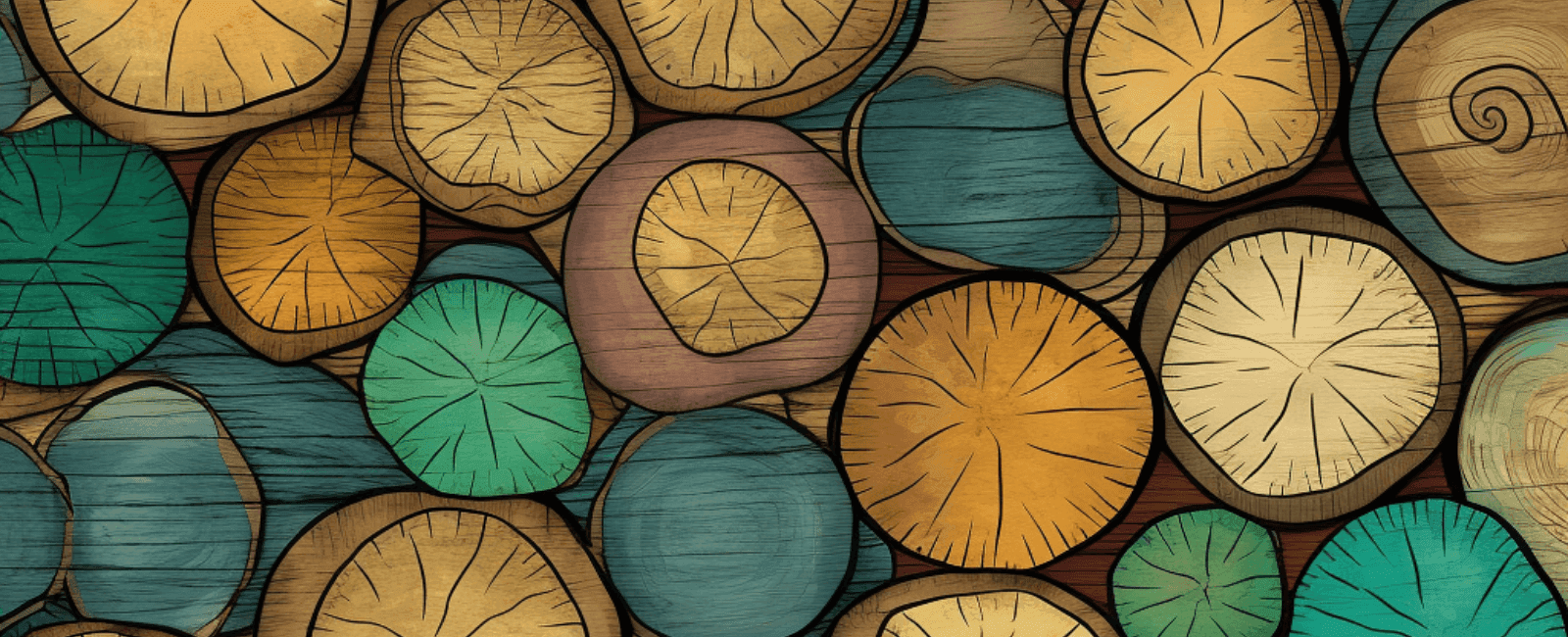

If you’re interested in woodworking, interior design, or instrument making, you may have heard the term “spalted” before. Spalted wood is a trendy material that craftspeople worldwide are gravitating towards as its popularity has risen. But what is spalted wood, and how do you use it?
What is spalting?
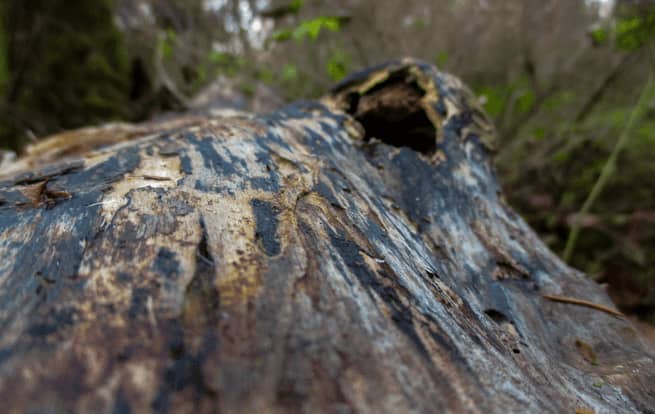
Spalting is a type of pattern that occurs in wood grain due to the activity of fungi. It’s different from the burl wood pattern (a growth unrelated to fungi) or the bore beetle patterning of ambrosia maple.
How spalting happens

Spalting is a form of wood coloration. It occurs when hungry fungi take over a piece of wood but don’t fruit. Instead, the fungal colony extracts nutrients from the biomaterial, leaving colors, dark lines, dots, and other patterns in the wood.
Spalting doesn’t happen to any old piece of wood. Instead, it takes a few conditions for it to occur.
Most natural spalting occurs in dead trees since decomposition leads to ample nitrogen and oxygen levels, a high moisture content, and an abundance of natural sugars.
Similarly, woodworkers looking to induce this punky pattern in non-natural methods must create and maintain these conditions and keep the temperature warm.
Common types of spalting fungi
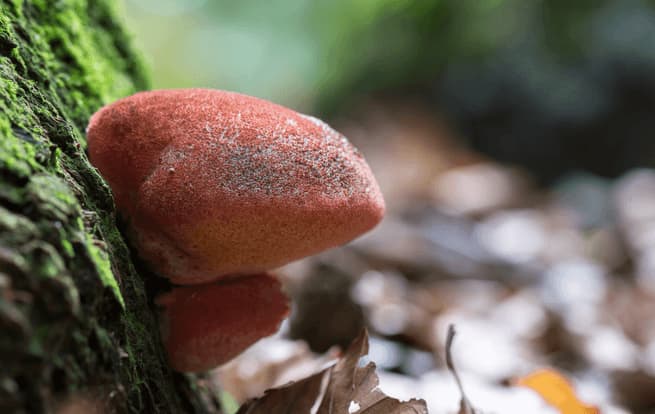
There are many types of spalting fungi, but they fall into only a few categories.
First, there are pigmentation fungi, which grow and produce extracellular pigments internally within wood. Pigmentation fungi are primarily composed of the unclassified “imperfect” fungi group as well as ascomycetes.
Next is white rot fungi. These mushrooms love to eat lignin, and the result is like a bleach stain pattern, less colorful than what pigmentation fungi create. However, some white rot varieties can create a similar visual effect. This is rare, as white pigmentation must be highly concentrated in the hyphae of the organism for it to show.
Trametes Versicolor, or turkey tail mushrooms, are one such fungus that can create white pigmentation in spalted wood — but only if they don’t fruit.
Finally, there are brown rot fungi, like Fistulina hepatica (beefsteak fungus). This fungus is most common on conifers but can also grow among deciduous trees. Brown rot often isn’t used in woodworking or DIY spalting since it makes the material crumbly and highly unstable.
Common types of wood species that become spalted

Many types of trees spalt. While both deciduous hardwoods and coniferous softwoods can undergo this process, fungi — and the kind of spalting they induce — don’t occur evenly across all wood types.
For example, zone lines and white rot are more commonly found in hardwoods, which provide better conditions for the enzymes within white rotting fungi. This is why it’s common to see hard maple or spalted beech wood with wild wavy patterns.
Birchwood is another common type of spalted wood. Recent research reveals that organisms like sugar maple and aspen are the preferred white rot and pigment fungi tree types.
The types of spalted wood
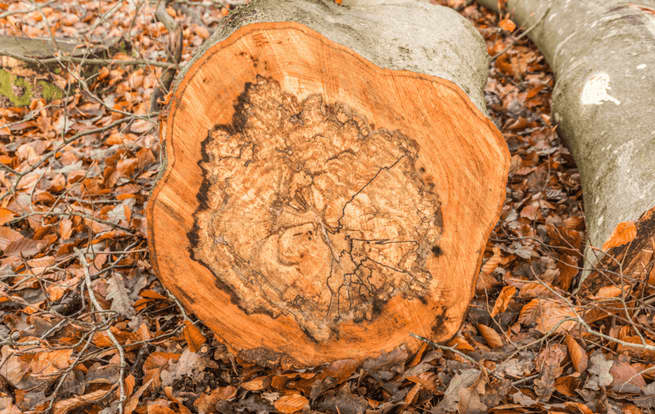
Pigmentation
What draws folks to spalted wood is the change in pattern or grain. However, wood, where fungi have colonized and introduced a new color, is the most treasured.
Pigmented spalt wood is high-value since it can take on unusual shades of pink or red, green, orange, black, yellow, or even purple.
One of the most popular colors of wood that has been stained is blue. Like a white stain, the blue stain pigmentation comes from a high concentration in the hyphae walls of growing fungi.
White rot
Pigmentation might be popular, but white rot patterning is more common. White rot fungi consume lignin, leaving a stretched, psychedelic, marbling pattern in its wake. If there are enough white pigments in the hyphae of the growing fungi, white rot may even leave a colored visual.
Zone lines
Unlike pigmentation or white rot, zone line spalting doesn’t require a specific mushroom species. Instead, the shapes are drawn like battle lines — competing fungi within the wood create barricades of hardened mycelium to defend woody territory and resources.
Zone spalting, which appears as black lines with various levels of spacing, can also be a single mushroom defining itself. These fungi are unafraid to set boundaries! Not so coincidentally, these are the most common spalting patterns within woodworking.
The uses of spalted wood
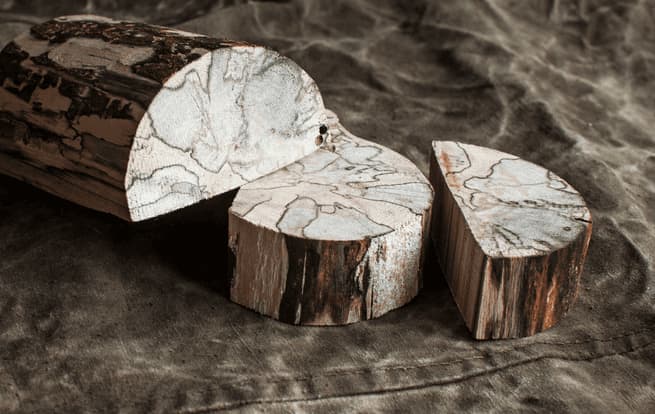
W.L. West & Sons write that spalted wood has a long history. For example, it was used in Italian Renaissances panel paintings. According to the company, they also use spalted pieces for artistic value: “Our idea is to make the less colorful and interesting hardwoods, like bland Beech and Sycamore, more available and interesting to those in the visual arts.”
In recent years, spalted wood has gained a vast, trendy reputation in woodworking projects, from guitar-making to furniture and even decorative wooden bowls.
According to woodworkers Suncatcher Studios, “The unique patterns and coloration of the spalting process can add value to wood which otherwise might have a low value.” Following this line, designers use spalted wood for stylish pieces like dressers or credenzas.
Some types, like spalted maple, are used as a veneer for table tops, with epoxy sealing in the beautiful design.
In terms of woodworking, using spalted wood can be challenging as artists have to consider the structural integrity of an actively decaying material. Still, turning a piece of fallen lumber into a handmade, functional art piece is a sustainable practice.
Is spalted wood safe to use?

A finished, sealed, spalted wood piece is safe to have in your house. The process of heating and finishing the wood will eliminate any active spores. The sawdust made during the process is what makes spalted wood dangerous.
If you’re working with spalted wood, be advised that raw material not fired in a kiln will have active spores within it. In the suggestion of Suncatcher Studios, “My advice, always wear respiratory protection when working with wood – regardless of whether you are working with spalted or unspalted wood.” This way, you’ll avoid any negligent shavings, sandings, or sawdust in addition to preventing active spores.
So, what is spalted wood? A material that artists, foragers, and you can use to add exciting, colored, nuanced, and new patterns to the world of wood crafts. Whether you DIY a project or turn to the fine woodworking experts for larger pieces, it’s an incredible footprint of fungi in the world. Like all things fungi, there’s a world of exciting and in-depth aspects to discover just beneath the surface.


